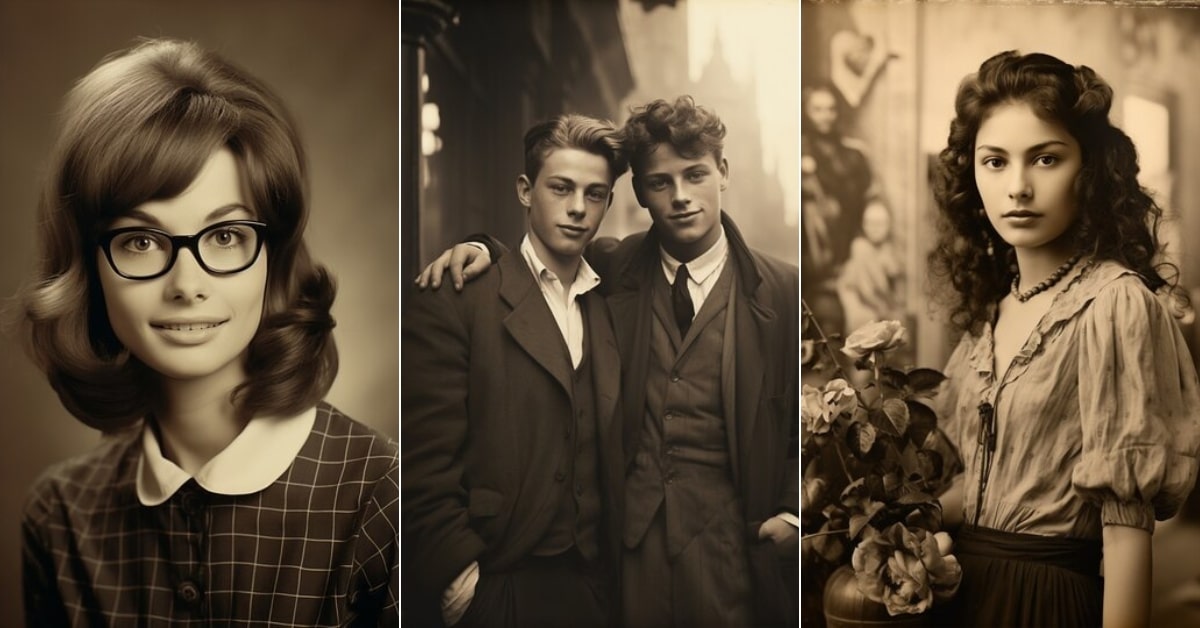Old photographs hold cherished memories, preserving moments from the past that are precious and irreplaceable. However, the ravages of time often leave these images faded, torn, or damaged. Retouching old photographs is an art that breathes new life into these nostalgic treasures, ensuring they endure for generations to come. This article delves into the significance, techniques, and considerations surrounding the restoration and retouching of old photographs.
Understanding Retouching Old Photographs
Retouching old photographs involves a meticulous process aimed at restoring the visual quality of aging images. This technique aims to repair damage, correct discoloration, and enhance overall visual appeal without compromising the original essence of the image.
Key Aspects of Retouching Old Photographs
- Damage Restoration:
- Repairing tears, scratches, and creases that have developed over time, restoring the image to its original state.
- Color Correction and Enhancement:
- Correcting faded colors, restoring vibrancy, and enhancing contrast to revive the original visual impact.
- Removing Blemishes and Stains:
- Eliminating spots, stains, and other imperfections that have accumulated over the years, providing a cleaner appearance.
- Preservation of Details:
- Retaining and enhancing the fine details and nuances present in the original photograph.
Techniques for Retouching Old Photographs
- Digital Restoration:
- Employing advanced software tools to digitally repair and enhance old photographs while preserving their authenticity.
- Hand Retouching:
- Utilizing manual techniques to delicately retouch photographs, especially for delicate or unique images.
- Color Grading and Toning:
- Applying color grading and toning techniques to bring back the original or desired color palette of the image.
- Selective Retouching:
- Targeting specific areas for retouching, ensuring a balanced and natural enhancement of the photograph.
Considerations When Retouching Old Photographs
- Original Image Preservation:
- Ensuring that retouching efforts aim to enhance the image without altering its original essence or historical significance.
- Client Collaboration:
- Collaborating closely with the client to understand their preferences and expectations for the retouched photographs.
- Skill and Expertise:
- Engaging skilled professionals or experts with experience in handling old photographs to ensure quality results.
- Digital Archiving:
- Consider digital archiving to preserve both the original and retouched versions of the photograph for future generations.
Benefits of Retouching Old Photographs
- Preservation of Memories:
- Reviving and preserving cherished memories captured in old photographs for current and future generations.
- Restored Visual Appeal:
- Restoring the visual aesthetics of photographs, allowing them to be enjoyed anew.
- Family Heritage Preservation:
- Safeguarding family history and heritage by preserving visual records encapsulated in old photographs.
- Emotional Connection:
- Rekindling emotional connections and sentiments associated with the moments captured in these photographs.
FAQs
Can all damages in old photographs be repaired through retouching?
While many damages can be repaired, extensive damage or missing elements might have limitations in restoration.
Does retouching old photographs affect their historical value?
Professional retouching aims to enhance without altering the historical value or integrity of the original photograph.
What is the average turnaround time for retouching old photographs?
Turnaround time varies based on the extent of damage and complexity; professionals typically provide estimated timelines.
How can one ensure the safety of original photographs during the retouching process?
Reputable professionals employ secure handling procedures to ensure the safety and preservation of original photographs throughout the retouching process.
Conclusion
Retouching old photographs is an art form that goes beyond mere restoration; it’s a means to preserve the essence of cherished memories captured in time. By delicately breathing new life into these visual artifacts, they not only regain their original luster but also continue to evoke emotions and connect generations over time.
This page was last edited on 27 February 2024, at 12:26 pm
